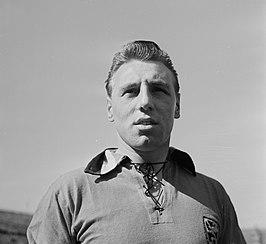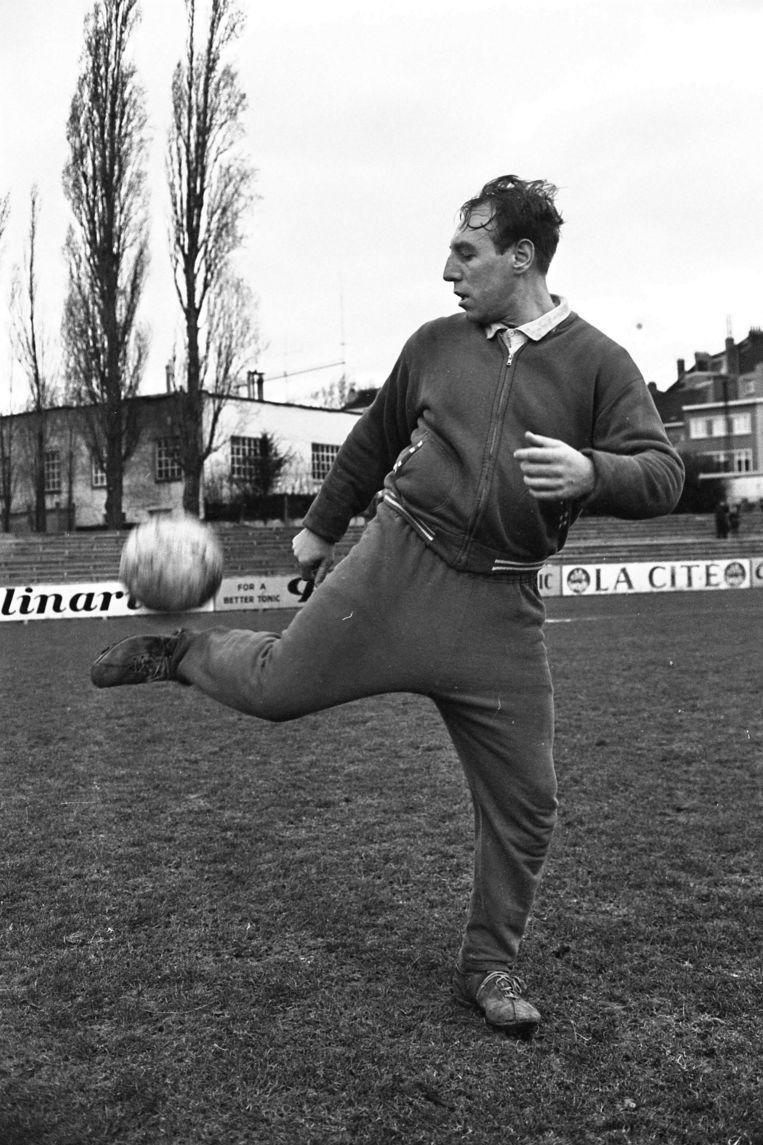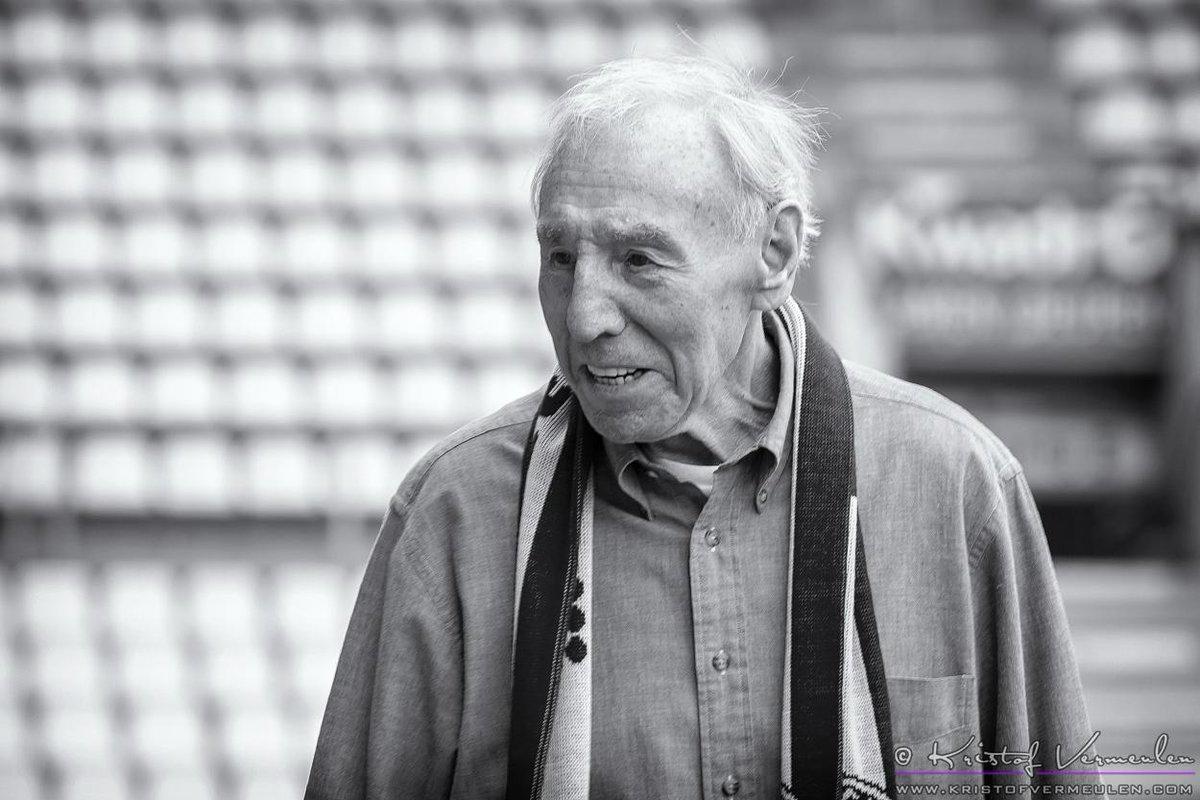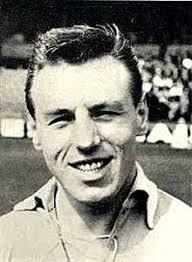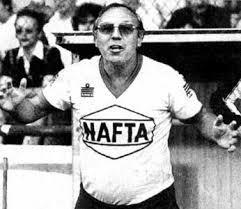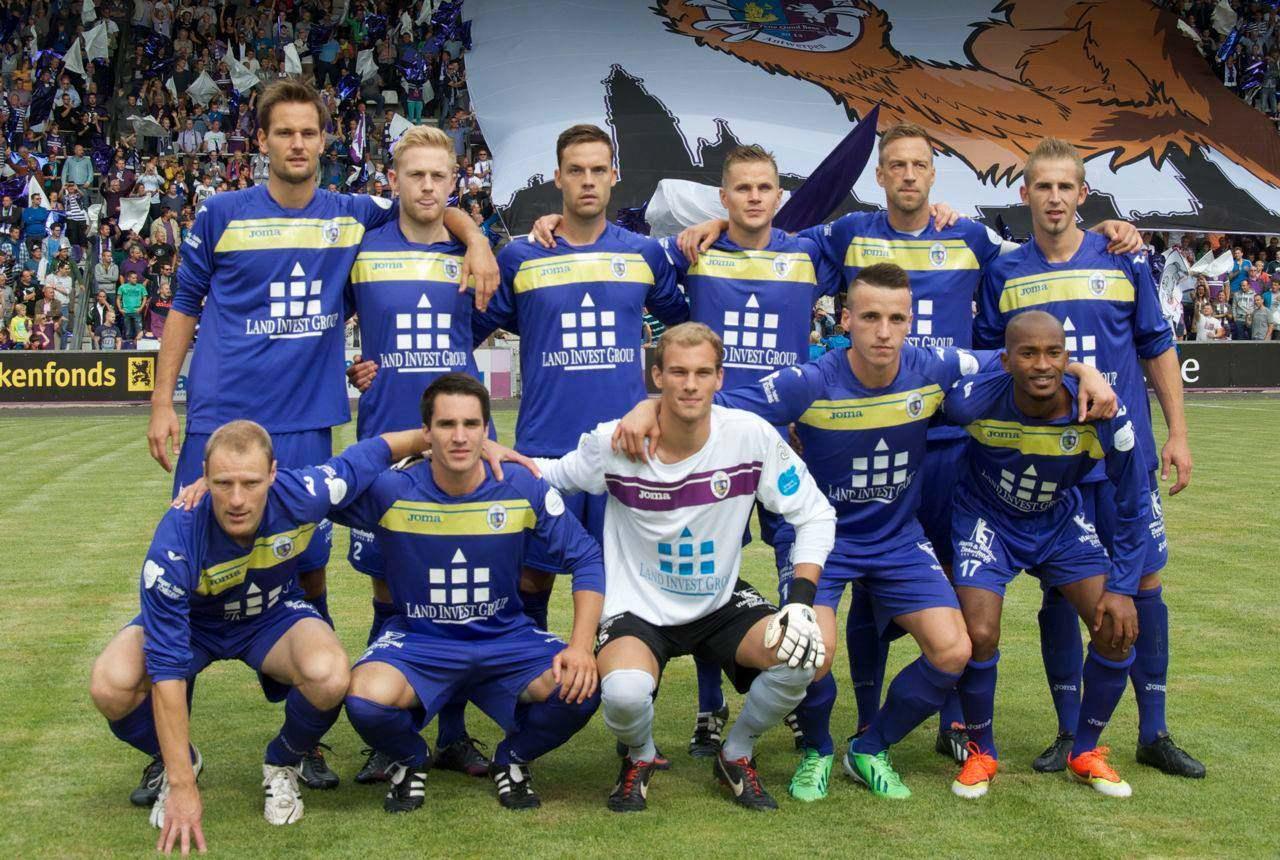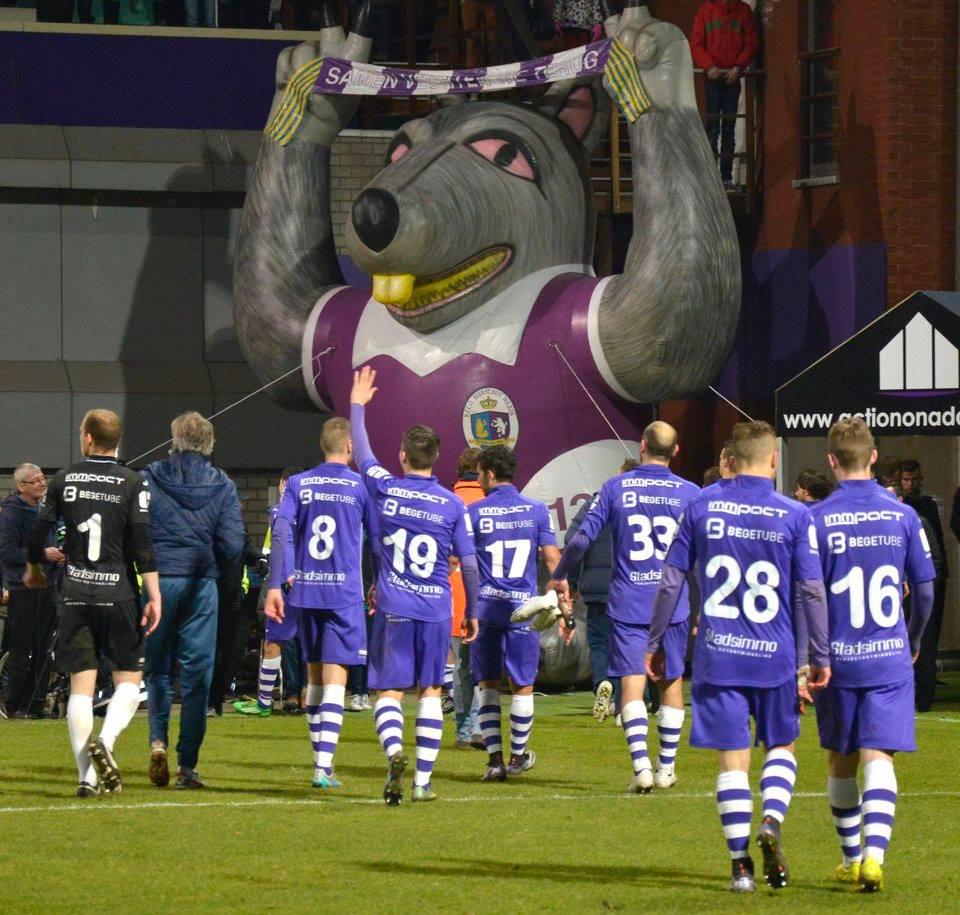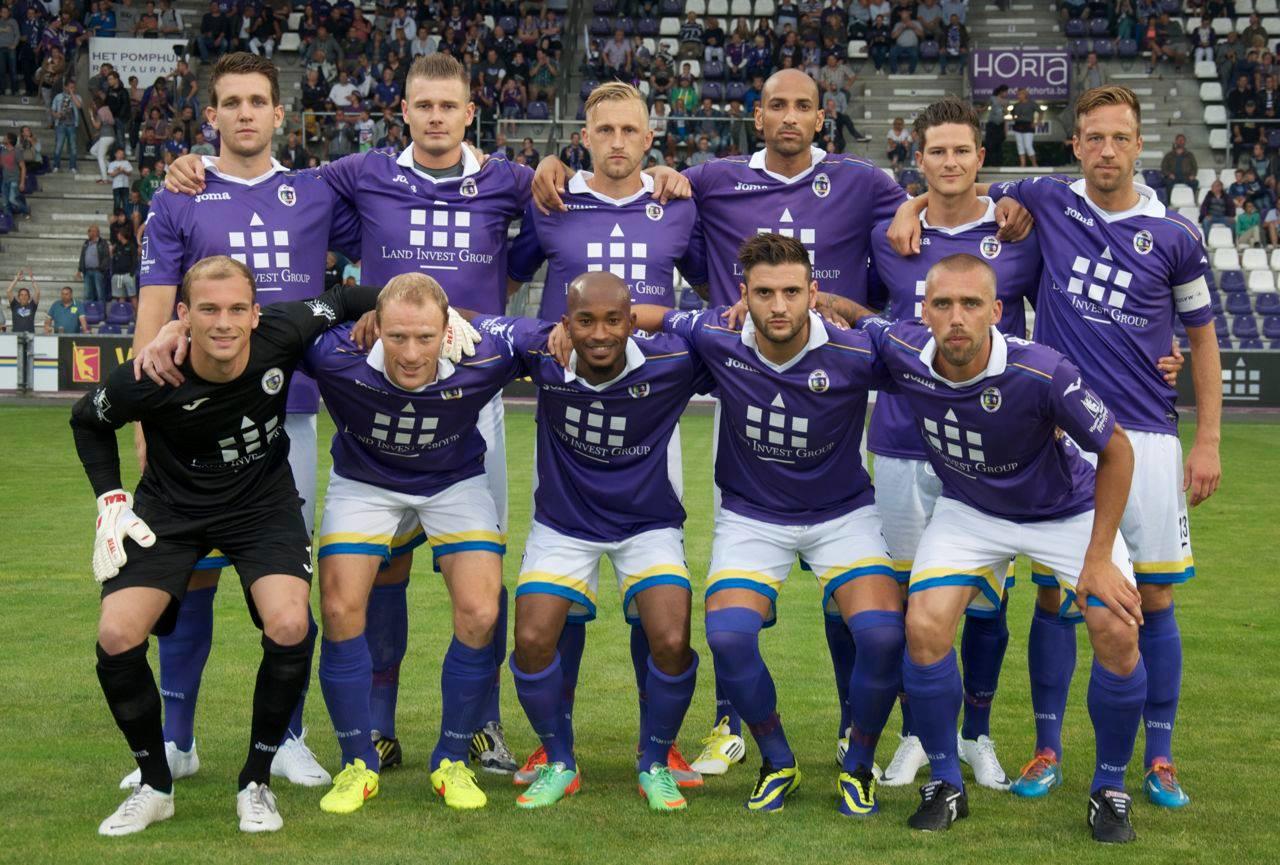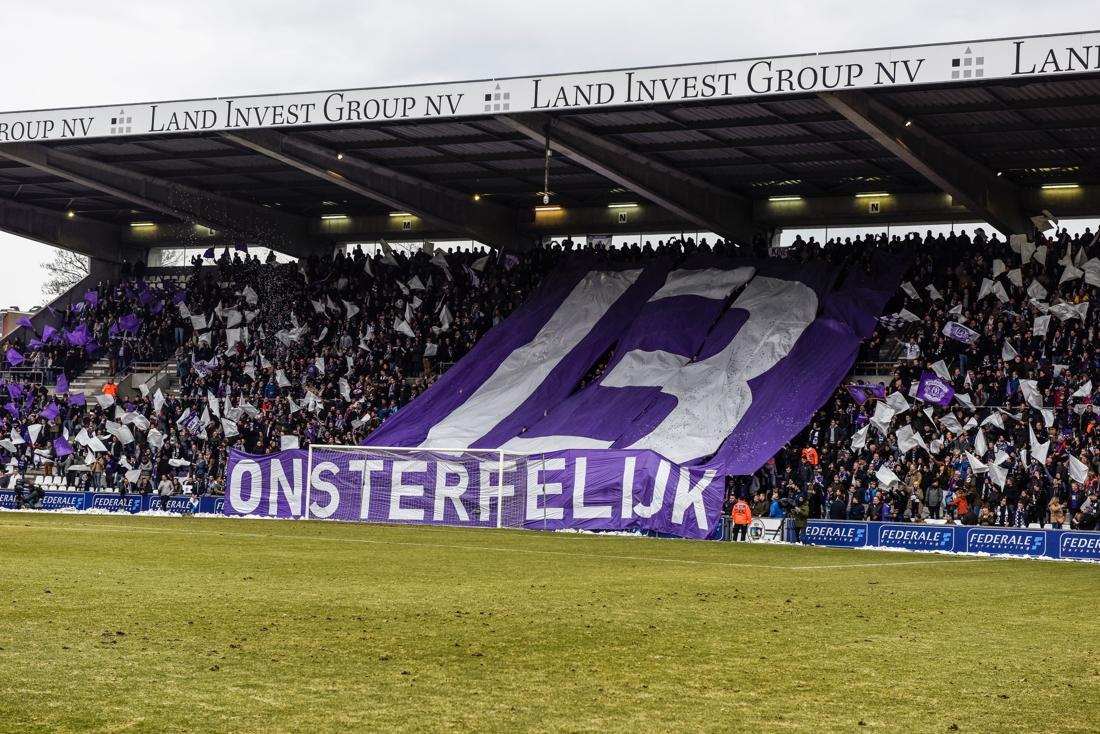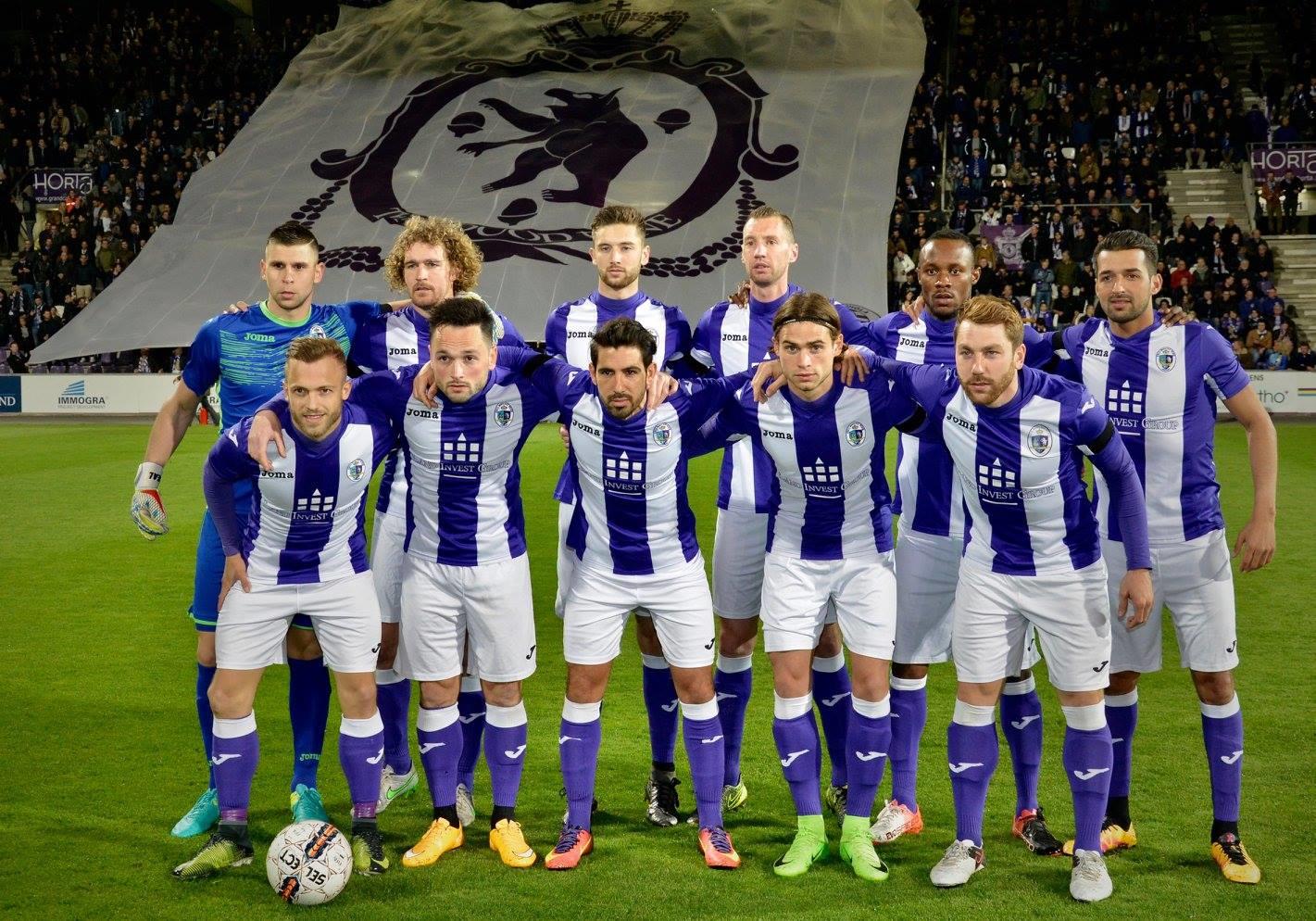The history of our club
History
The start
Beerschot Athletic Club was established in November 1899 by Alfred Grisar, who converted a plot of land in the Kiel district in the south of Antwerp that belonged to his father Ernest into multifunctional sports accommodation. Besides the already existing horseracing course and stalls, the grassed areas were tuned into sports fields for hockey, cricket, rugby, polo and tennis. In February 1900 a football department was also set up that was officially registered in July of that year. Beerschot AC chose purple and white for its club colours. The purple was a sign of bereavement in remembrance of Ernest Grisar who had just passed away. Paul Havenith became the first chairman of the club in 1901.
The first match played by Beerschot AC took place on 21 October 1900 against Cercle Brugge… and was a hit straight away. Beerschot won by a convincing 10-2 score. The team started in the top division, was relegated at the end of the 1905-1906 season, but bounced back the following season and was set to play in the top division uninterrupted up to 1981.
Olympic Stadium
When in 1919 the city of Antwerp put itself forward as a candidate for the 1920 Olympic Games, Beerschot AC’s home was chosen straight away. It was developed over the years to become a majestic stadium, was looked on favourably by the International Olympic Committee, with chairman Pierre De Coubertin choosing the stadium on the Kiel. So two years after the end of the first World Word War Beerschot hosted the VII Olympiad, and Beerschot’s stadium was officially rechristened as an Olympic Stadium. Besides the already existing main stand, a somewhat smaller “wooden stand” was built on the opposite side with wooden accommodation. Behind the stands on the standing room (“the people’s places”) Greek plaster columns were erected that were removed three years later. Four towers completed the scene. During the 1920 Olympic Games the Olympic flag with five rings was presented and the Olympic oaths were pronounced for the first time. To finance the occasion the Belgian Olympic Committee and the city of Antwerp also called upon the Beerschot administration that mainly consisted of counts and other noble figures.

Rik Coppens becomes the new star
During the 1940-1950 years Beerschot could add no new titles to its record of achievements. Purple-white did still opt to play attractive combination football – “the purest football is still always played in the Olympic Stadium on the Kiel” wrote the newspapers for many years –but this was not translated into successes. In 1950 Beerschot celebrated its fiftieth year with a jubilee match against Tottenham Hotspur that was won 2-1.
Three years later Beerschot was the first football club that toured the Belgian Congo for three weeks and played exhibition matches in just about all corners of the immense country. This proved to be a worthy ambassador for Belgium and Belgian football and was enormously popular. Players such as Stanneke Huysmans and Rik Coppens were celebrated as heroes there.
In this period Rik Coppens had emerged as the new star at Beerschot. He had enormous technical skills, was tight on the ball, had an eye for goals, he was a super dribbler and played to the crowd like no one had ever done before. Then after an injury in 1954 he returned in the reserves against Beringen, with more than 8,000 spectators in the Olympic Stadium. His popularity was immense. In that same year 1954 he was the first laureate of the Golden Shoe, the ultimate award for the best footballer in Belgium.
Beerschot did not become champions with Rik Coppens in the line-up. But spectacle abounded. This included an exhibition match against Pele’s Santos in 1960. The Brazilian ball jugglers outplayed Beerschot with a 1-10 score… but the best goal in the evening came from Coppens’ boot who scooped the ball over a Brazilian defender and hit home on a half turn. Pele was the first to congratulate Coppens with the world-class goal.
Juan Lozano
In the meantime the Beerschot supporters had also got to know the young Spanish midfielder Juan Lozano, who had arrived with his parents from Andalusia in Antwerp and who had been dribbling everyone off the youth practice fields on the Wilrijk Squares. After Raymond Braine and Rik Coppens the third Beerschot gifted talent had arrived. The player with the velvet ball touch. After the cup victory in 1979 he left Beerschot and widened his sporting horizons: he first went to the Washington Diplomats enticed by the dollars, then to Anderlecht and Real Madrid. A genial football artist with the “Beerschot product” stamp on his rear.
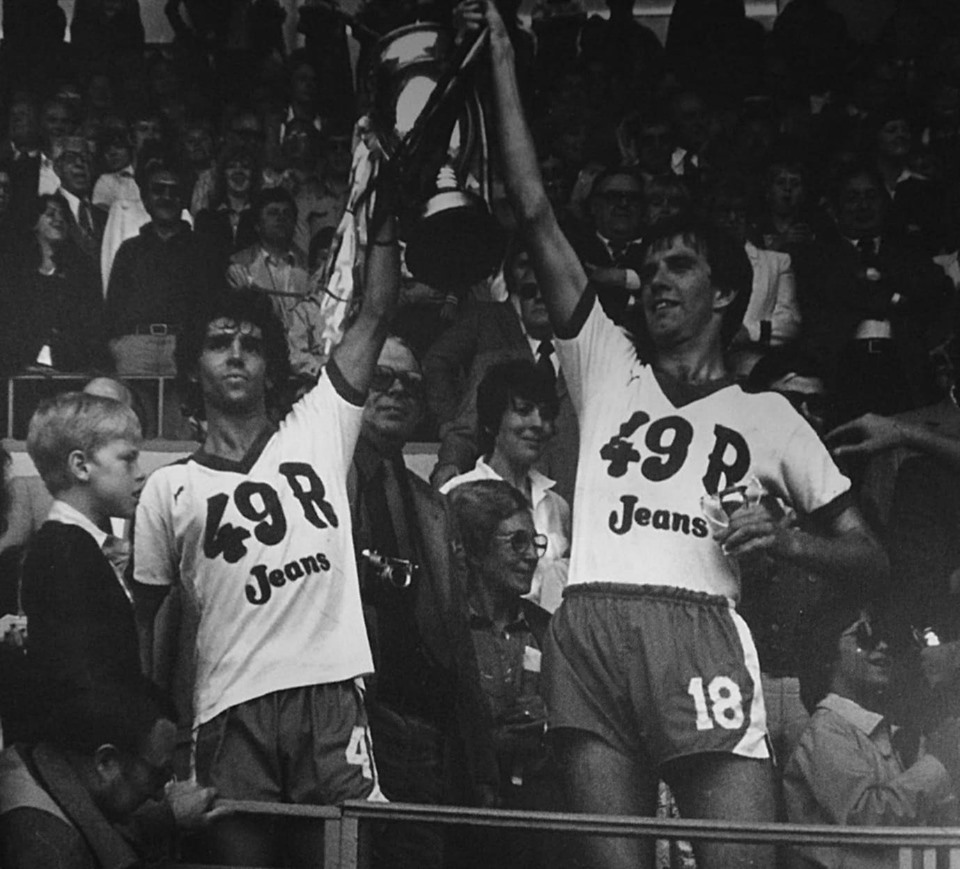

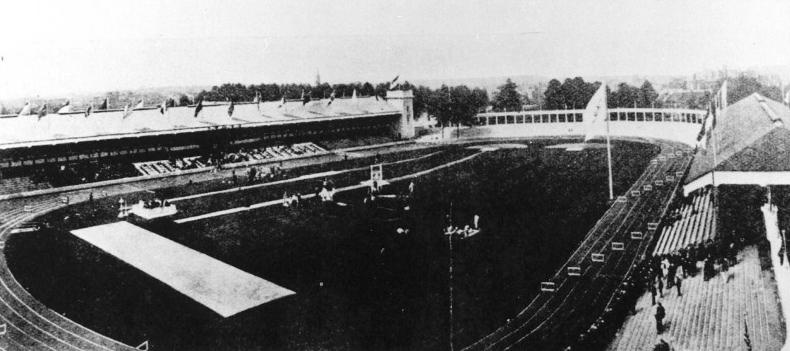
The 1920-1930 years of success
The Olympic Games, where Belgium’s national soccer team won the gold medal, gave football in Antwerp an enormous boost. In this period Beerschot AC grew to become the most popular, best footballing and most successful team in Belgium. In the 1921-22 season Beerschot won the national championship for the first time after a play-off against Union. In the 1923-24, 1924-25, 1925-1926 and 1927-1928 seasons purple-while also topped the highest division. It was five titles in a period of seven years, and this under the guidance of trainer Johnny Dick with Raymond Braine as the absolute star.
In 1925 when celebrating of the club’s twenty-fifth birthday, Beerschot received the royal title and the club became Royal Beerschot Athletic Club.
At the start of the thirties Beerschot started to briefly lose its leading status. Partly as a result, there was the forced departure of Raymond Braine to Sparta Prague. Braine was suspended by the Belgian Football Association because he was running a pub in Antwerp, and he took up the offer from the top Czechoslovakian club where he developed to become an absolute global star. With him in the line-up Sparta Prague won trophies including the Mitropa Cup, the forerunner of the UEFA Europa League and the Champions League. In 1937 Braine returned to Belgium – and to Beerschot – that helped the club secure two new national championships in the 1937-38 and 1938-39 seasons. Beerschot seemed on the verge of a new longer period of success, but all that was brutally ended in 1940 by the Second World War.
The appearance of professional football on the Kiel
At the end of the 1960s professional football also made its appearance at Beerschot. A new name was chosen in 1968: Royal Beerschot Football and Athletics Association. With this professionalisation the first foreign footballers also appeared in the Olympic Stadium: Lothar Emmerich, a German international who in 1966 had played in the World Cup final at Wembley against England, was one of the best transfers in the period. In his first season at Beerschot (1969-1970) he immediately became Belgian top scorer with 29 goals in 30 matches.
In the seventies Beerschot won the Belgium Cup twice. In 1971 Sint-Truiden was defeated at the Heizel by 2-1 after injury time (goals from Herman Houben and Arto Tolsa); in 1979 there was a 1-0 victory in the final against Club Brugge (goal by Johan Coninx). In this last match, Beerschot had the Polish wonder-keeper Jan Tomaszewski between the sticks, and the Haitian ball juggler Emmanuel Sanon provided the decisive pass. These were two footballers plucked from the World Cup by Beerschot … and who developed to become players on the world stage in the Olympic Stadium.
Financial problems, relegations, bankruptcy and other ills
In 1981 Beerschot was penalised by the Belgian Football Association with compulsory degradation as a result of “suspected bribery”. It was Beringen who made a shadowy complaint, and Beerschot was relegated to the second division. This was the first time out of the top league since 1906. But purple-white picked itself up the following season in getting back to the first division and regained its place among Belgium’s footballing élite.
The club gained new momentum, and the youth department made particular progress at national and international level with the annual Muguet Tournament on the Wilrijk Squares which was attended by top teams from home and abroad. Teams such as Anderlecht, Club Brugge, Standard, Ajax, Feyenoord, PSV, Arsenal, Sparta Moscow,… they sent all their best youth players to Antwerp.
But things deteriorated over the years from a sporting viewpoint. There were still a number of positive highlights, such as a 5-1 derby victory against Antwerp and a sensational 4-3 victory against Standard where in the final quarter a 0-3 deficit was turned around, but in the final table Beerschot was often in the bottom half.
In 1991 followed relegation to the second division … and with a complaint from SK Tongeren on top Beerschot even had to drop to the third division. Purple-white immediately bounced back again (to the second division), but that’s where the revival got stuck. Failure to reach the play-offs for promotion season after season also had serious financial consequences.
Under chairman Paul Nagels the club was transformed to Royal Beerschot Football and Athletics Club, the stadium was smartened up, but no progress was booked at sporting level. In 1997 the last professional players left sinking Beerschot ship and the club went financially under. Trainer Marc Noé finished the last seasons with a group of eager but inexperienced youth players. The year 1998 saw relegation to the third division before the club went into liquidation, coming into hands of barrister Guy Laugs and the case was settled.
In May 1999 Beerschot VAC played the very last championship match in the Olympic Stadium in its history, in the third division against Rita Berlaar. It was a 1-2 defeat, matricule number 13 was withdrawn by the Royal Belgian Football Association. The story had ended.
Rebirth as Germinal Beerschot Antwerp
Some months earlier the club administrations of the bankrupt Beerschot and supporterless Germinal Ekeren had sat down and come to an agreement to start the 1999-2000 season under the name KFC Germinal Beerschot Antwerp with matricule number 3530 from Germinal. They were to play in the first division. The club was to play its home matches in the Olympic Stadium and started an ultra-prestigious project to give it a new life. The top Dutch club Ajax provided financial support but also creamed off the best young talent (Jan Vertonghen, Thomas Vermaelen, Toby Alderweireld, Tom De Mul, etc.). Jos Verhaegen with René Snelders in his wake were the senior figures, with Franky Vander Elst as trainer and top players such as Marc Degryse and stars such as Wesley Sonck, Manu Karagiannis, Luciano, Daniel Cruz and François Sterchele all on the Kiels pay list. One success was the result, in 2005. A third cup victory in the King Baudouin Stadium, where under the leadership of trainer Marc Brys Club Brugge was defeated 2-1 , with goals from Karel Snoeckx and Kris De Wree. What followed were European duels against Olympique Marseille (twice 0-0 but beaten on penalties) and a unique chance to move up to the top.
But the club leadership lacked the courage and nerve to make the next step and everyone was left treading water. Ajax had now switched off the money tap, while the cautious and too conservative approach of the Verhaegen-Snelders-Hofmans duo was no longer appreciated. Suddenly a certain Patrick Vanoppen arrived in the Olympic Stadium from nowhere and unseated the old Germinal personnel.
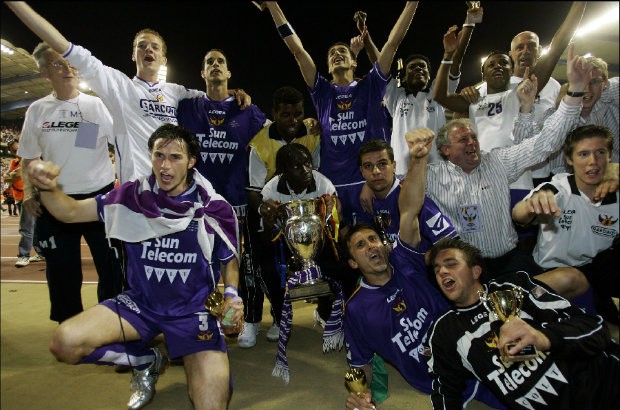
Vanoppen puts Beerschot through the shredder
The businessman from Leuven wanted to enjoy the glorious Beerschot of former times. He changed the name again to Beerschot AC, that stood for Beerschot Antwerp Club, but his delusions of grandeur, financial promises that nothing ever came of, ego trips and failed policy made Beerschot bankrupt again in just three years’ time. Exit Vanoppen. Beerschot looked dead and buried again.
The way back to the top
On the initiative of the Beerschot supporters , in just a few months an agreement emerged with KFCO Wilrijk that was playing in the first provincial league. Forces were joined, and supported by the fans. KFCO Beerschot Wilrijk was born in 2013. The matricule number was 155 Wilrijk. The club played in the first provincial league. The trainer was Urbain Spaenhoven, Eric Roef was the Chairman. More than six thousand season tickets were sold in a short period of just a few weeks, an agreement was reached with the City of Antwerp to be able to play the home matches at the Olympic Stadium… and the rise to success was fully under way.
With four championship titles and just as many promotions KFCO Beerschot Wilrijk climbed in one straight line from the first provincial league to 1B – while even losing one season because of league reforms where an extra league (First Amateur) was created. The architects of the titles were Urbain Spaenhoven, Dennis van Wijk and the returning Marc Brys. Twice in row Beerschot stranded in the ultimate promotion duos but the door to 1A would be broken down. In 2018 Cercle Brugge was too strong (with the assistance of referee Boucaut) (1-0 at the Kiel, 3-1 in the Jan Breydelstadion). In 2019 KFCO Beerschot Wilrijk – with Stijn Vreven as new sporting director – played a 0-0 draw at home against KV Mechelen but lost 2-1 in the away fixture. K. Beerschot V .A. did succeed the comeback to the top tier division in 2020 after two wins in the final against OH Leuven (1-0/1-4). 5 Championship titles in 7 years, what a unique story!
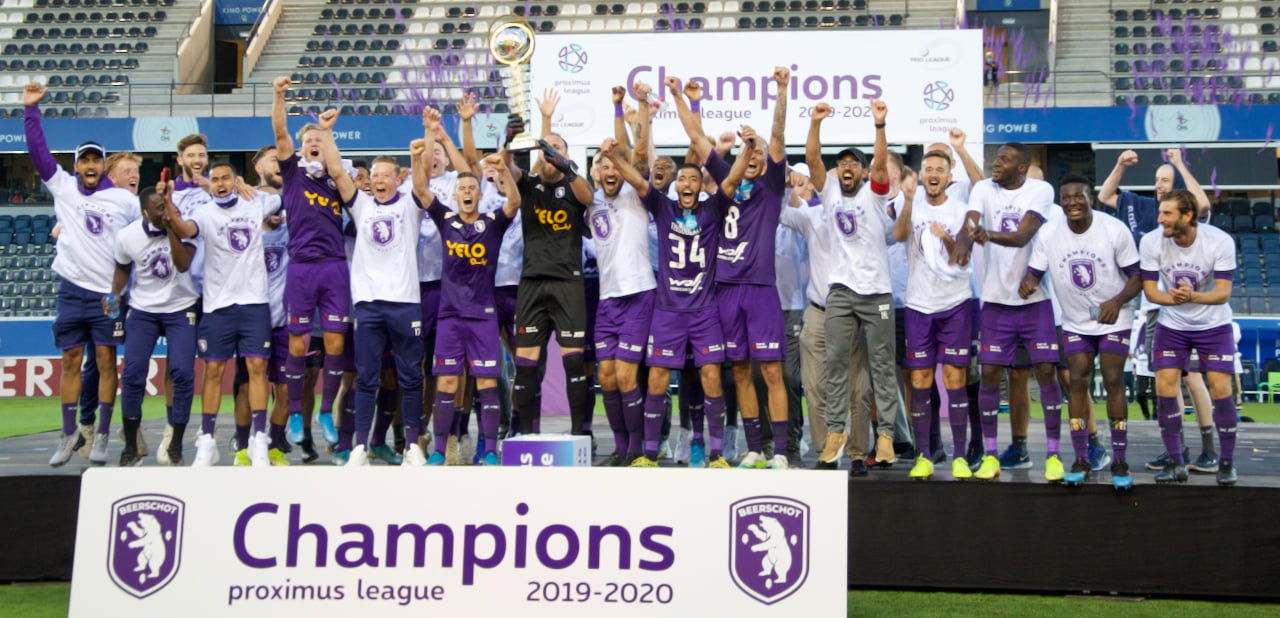
Name change with the old matricule number back
In the course of the 2017-2018 season the club was taken over by construction company DCA of Francis Vrancken from Beerse, who then sold 50% of the shares to the Saudi prince Abdullah Bin Mossa’ad bin Abdulaziz al-Saud. They gave the club an important financial injection and made no bones about their sporting ambitions: up to 1A as soon as possible. They also collected the necessary funds to on 1 June 2019 buy back the old matricule number 13 – and accordingly also the attractive record of achievements of the old Beerschot – and changed the name to Royal Beerschot Football Club Antwerp.



